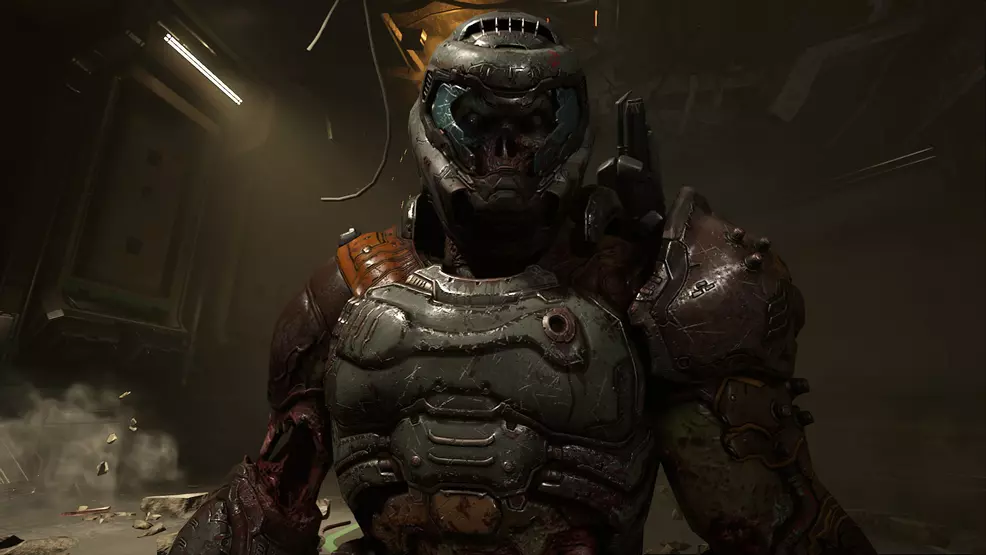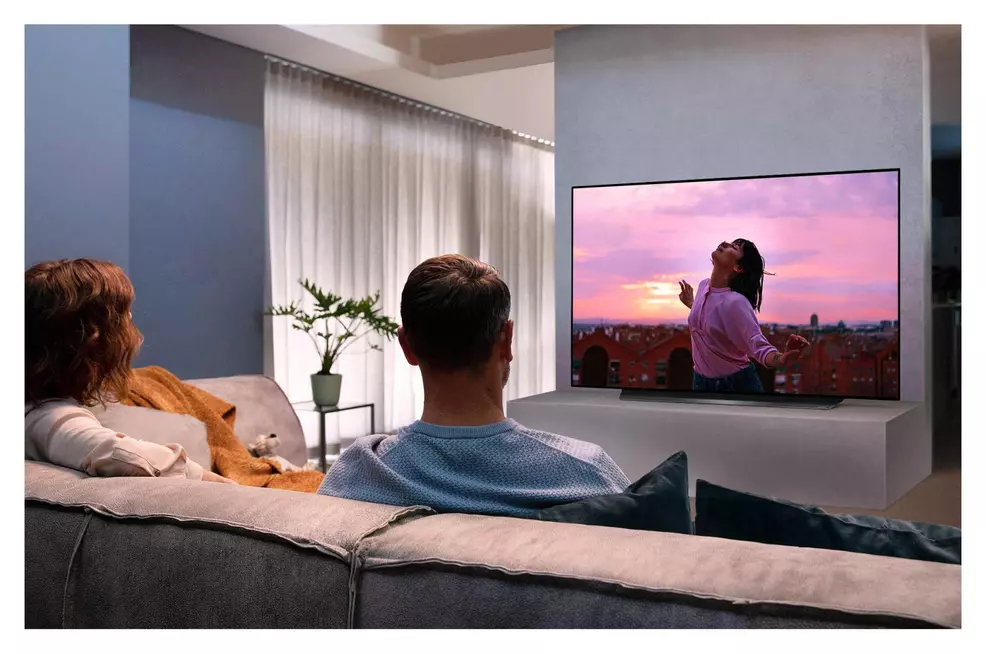What you need to know about HDMI 2.1 for PS5 and Xbox Series X
The new generation of consoles (and PC graphics cards) are arriving with the all-new HDMI 2.1 specification. Find out why this is important and what it means for your gaming future.
Back in the simpler times of the early 2000s, the HDMI interface was developed to streamline the way people connect video sources to their displays and integrate copy-protection schemes that Hollywood lawyers are so fond of. Fast forward eighteen years and thirteen revisions to the original specification and HDMI is once again something that consumers will need to think about when it comes to the new PS5 and Xbox Series X consoles, as well as new PC graphics cards from AMD and NVIDIA. To get the best performance out of your new consoles and PCs with the latest TVs and monitors, you will need to use the HDMI 2.1 interface.
What you need to know about HDMI 2.1

The thirteenth major revision of the original standard, HDMI 2.1 has been around since it was certified by the HDMI forum back in November of 2017. The HDMI Forum is a collection of tech companies including Toshiba, Sony, and Hitachi that worked together to ensure a universal standard for audiovisual equipment connections in consumer electronics. While the HDMI 2.1 specification has been finalized and accepted for a couple of years now, the first devices that actually make use of its potential features are finally coming to the market.
Both the PS5 consoles and both Xbox Series consoles will be HDMI 2.1 compliant. Additionally, the new RTX 3000 series of graphics cards from NVIDIA also feature HDMI 2.1 output. The upcoming AMD Radeon RX 6000 graphics cards are expected to launch with compliance as well. What does this mean for consumers? This new HDMI certification allows for higher refresh rates, resolutions, and color depth than ever before.
Resolution
HDMI 2.1 allows for high resolutions such as 4K (3840x2160), 8K (7680x4320), and even 10K (10240x4320 in a 21:9 aspect ratio). The previous HDMI 2.0b specification only allowed for a max of 4K resolution. High refresh rates are also possible with HDMI 2.1. 4K can be displayed at 120Hz, and 8K can be displayed at up to 60Hz. Higher refresh rates are possible but require removing color information from the signal as well as the use of Display Stream Compression (DSC).
HDR
HDMI 2.1 also has enough bandwidth to deliver these impressive video signals with 10- and 12-bit color, which are needed to properly display HDR content. While some displays have been technically capable of 4K 120Hz HDR output in recent years, there has been no easy way to get such a high-bandwidth signal to the screen until now. For the first time, gamers will be able to have their 4K cake and eat it too.

Variable Refresh Rate
Gamers will also love the Variable Refresh Rate (VRR) support. This technology allows displays to dynamically change their refresh rates to match frame rates of the source input. This allows for smooth gaming that is free of screen-tearing or input lag associated with older screen synchronization techniques. Veteran PC gamers will recognize this technology as being akin to NVIDIA’s G-Sync or AMD’s Freesync. If a game can only play at 45 frames per second, VRR allows the display to drop to 45Hz and the result is smooth output that is nearly indistinguishable from a locked 60Hz output. For console gamers, this is going to be a game-changer. Where older games were locked down to 30Hz to ensure smooth output and consistent controller input, VRR will allow games to make full use of the console power.
eARC
Consumers who use home theater receivers and soundbars will love the new eARC support that HDMI 2.1 provides. When using an eARC capable display and audio device, consumers can use a single HDMI 2.1-compliant cable to send uncompressed digital surround sound from the display to the receiver or soundbar. Some older HDMI 2.0 receivers have limited eARC support, meaning that a PS5 can be hooked up to your new HDMI 2.1 TV and the TV will send the high-resolution sound to the receiver so you get the best possible video and sound possible.
Auto Low Latency Mode (ALLM)
HDMI 2.1 also makes sitting down and playing your games with the best possible display settings very easy. The new Auto Low Latency Mode (ALLM) feature allows consoles or graphics cards to communicate with displays. The display will automatically adjust its picture processing and output mode to ensure the lowest latency and minimal input lag. The days of having to fumble with settings menus and study about which television features caused issues with gaming are a thing of the past.
PS5, Xbox Series X, and HDMI 2.1

While the HDMI 2.1 specification provides enough bandwidth to transfer 48Gbps of data from a source device to a display, all of the new next-generation consoles will use chipsets that output only 40Gbps. This amount of bandwidth is still high enough to support 4K 120Hz signals with full 10-bit color depth for high-speed HDR gaming with no compromise, though high-refresh 8K HDR is likely off the table. This should be of little concern, though, as the consoles do not have enough horsepower for such a demanding workload (and high-refresh 8K displays are still years away from mainstream adoption).
The new consoles from Sony and Microsoft will both officially offer 4K 120Hz output with VRR support and full-bandwidth HDR. Not all games will be capable of matching the highest-possible output standard, but developers will have options. Some studios have already made commitments to having their games operate at 120Hz on the new consoles, including Ubisoft with Rainbow Six: Siege and Codemasters with Dirt 5. Much like we saw with the PS4 Pro and Xbox One X, some games will offer options for higher image quality or higher frame rates. Console players will finally be able to enjoy benefits that had previously been exclusive to high-end PC gaming.
Consumers who opt for the versions of the new consoles that come with UHD Blu-ray drives will be able to watch commercial movie discs in the highest possible quality. Streaming services such as Netflix, Hulu, and HBOMax will have the ability to offer much higher video and audio quality, should they choose to do so.
PC Gaming and HDMI 2.1
Both AMD and NVIDIA have new graphics cards releasing in the back half of 2020 that are offering HDMI 2.1 support. Like the next-generation consoles, these new cards are fully HDMI 2.1-compliant and will offer high resolutions, high refresh rates, VRR, and HDR. While conventional monitors are lagging behind the breakneck pace of television development, the first HDMI 2.1 screens will arrive on shelves any day now and consumers should expect most of the premium gaming monitors to come equipped with HDMI 2.1 as they release over the coming years. While some stopgap models have arrived on the market already promising a generational leap in performance, some require the use of multiple DisplayPort cables or other less-elegant solutions for problems solved by HDMI 2.1.
NVIDIA and LG announced a partnership last year that saw LG’s premium OLED TVs gain G-Sync compatibility certification when used with RTX 2000 series graphics cards. These were the first displays to offer HDMI variable refresh rate support with NVIDIA cards (all previous G-Sync monitors were DisplayPort only). While full-bandwidth 4K 120Hz HDR gaming was not possible with this configuration, the release of the new RTX 3000 series opens the door to the highest-quality display experience, thanks in part to HDMI 2.1.
LG’s 2019 OLED TVs shipped with HDMI 2.1 support across all their inputs and are compatible with the RTX 3000 GPUs. The 2020 LG OLED lineup also continues the HDMI 2.1 support, as well as an all-new 48-inch model that LG has been marketing to PC gamers as the first no-compromise gaming display. Predictably, when dealing with cutting-edge technology, some hiccups are expected. Because no one on earth had real HDMI 2.1 output devices until NVIDIA released the RTX 3080 last week, no real-life testing had occurred. As of this writing, G-Sync mode is currently bugged when using 4K 120Hz mode on the LG displays and the RTX 3080, though LG has already committed to releasing an updated firmware in the coming weeks.
Those darn HDMI cables

Whether you lost one or got duped into paying $100 for one at a BestBuy in the past, HDMI cables have historically been a bit of a pain. While the HDMI standard is designed to ensure that all new versions remain backwards compatible with previous iterations, not all cables or controllers are created equal. The marketing surrounding these cables is also a minefield of half-truths and snake oil. If you want to ensure a smooth experience with HDMI 2.1 devices, you’ll need a quality cable from a reputable manufacturer that is compliant with the HDMI 2.1 specification.
Your best bet is to stick with companies that have served you well in the past. If this is not an option, be sure that the cable you buy is marketed as 48Gbps-capable. This is the easiest identifier to use when shopping online. You should also know that you don’t need to spend $100 on a cable and there are good HDMI 2.1 cables available online for under $20. As a general rule, you also want to avoid lengths above 25 feet as complications are likely to arise with extended runs. In situations that allow it, we recommend cables under 25 feet (or 8m) for best results.
Which TVs offer HDMI 2.1 features?

Various TV manufacturers have cutting-edge models available that either fully support all HDMI 2.1 features or a selection of the features. LG, Sony, Samsung, Vizio, Hisense, TCL, Toshiba, and Panasonic have models on sale now that feature some level of compliance. While we intend to have a more comprehensive guide to the best TVs for the next-generation consoles and PC up soon, you can do a bit of research using the reviews listed over at RTINGS. On each TV review page, they publish, a section of the review is dedicated to HDMI features and modes, including support for 120Hz refresh rate, VRR, ALLM, and eARC.
As a general rule for 2020, HDMI 2.1 features are mostly confined to the high-end models from each manufacturer. While some HDMI 2.1-compliant TVs are available at affordable prices, you should not expect these features on the $150 Black Friday doorbuster sale models that flood retailers during the holiday season. If you simply want a shortlist of models to keep an eye on, look for the Sony X900H, LG CX, and Samsung Q90T.
For more in-depth guides on hardware and games, including up-to-date information on PS5 and Xbox Series X, keep it tuned to Shacknews.
-
Chris Jarrard posted a new article, What you need to know about HDMI 2.1 for PS5 and Xbox Series X
-
-
-
-
They will be via firmware fix
https://www.reddit.com/r/hardware/comments/ixkc8w/lg_to_firmware_fix_nvidia_ampere_rtx_gsync_issues/
-
-
Make sure to direct users to look for the HDMI certified seal from the HDMI spec which can be seen here: https://www.hdmi.org/spec/hdmi2_1
This is the single best indicator that a cable is a genuinely good cable. Counterfeits including the seal are rare.
-


